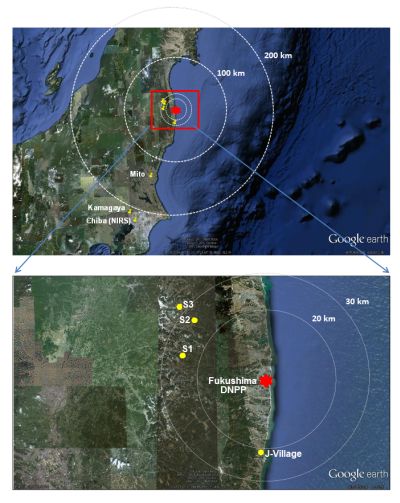A new study of contamination at the Fukushima power plant has identified increased amounts of radioactive plutonium in the environment, but experts are stressing that the resulting levels of radiation are very low and pose little risk to human health.

The research, published in the journal Scientific Reports, has identified small amounts of the radioactive plutonium isotopes 239Pu and 241Pu in the environment surrounding the Fukushima plant. A straight forward explanation of the research can be found on the Nature News Blog.
The results of the study should not be of concern to health authorities as the amounts detected are not believed to pose a radiation threat to humans.
Our colleagues at the UK SMC collected the following expert commentary. Feel free to use these quotes in your reporting. If you would like to contact a New Zealand expert, please contact the SMC (04 499 5476; smc@sciencemediacentre.co.nz).
Prof Steve Jones, independent nuclear and environmental consultant, said:
“The finding of plutonium-241 does confirm that small amount of plutonium isotopes were released during the Fukushima accident, and this is of interest to those investigating the detailed mechanism of radioactive releases during the accident. There are no health implications of this finding, either in the short or long term, at the locations sampled outside the current exclusion zone. Nonetheless, as the authors comment, further study of the deposition of these radionuclides within the exclusion zone, close to the reactor site, would be merited.”
Prof Jim Smith, Professor in Environmental Physics at the University of Portsmouth, said
“The study is interesting in that it shows some elevated levels of Plutonium-241 in soils 20-30 km from Fukushima Daiichi. But the levels are extremely low and of no significance to health. Pu-241 at these levels presents no external radiation hazard, and it is not strongly absorbed by plants so risk from contaminated foodstuffs is low. The levels of radiocaesium currently seen around Fukushima, many thousands of times higher, are much more significant.
“As the paper says, Pu-241 turns into the potentially more toxic Americium-241 when it decays. But levels of Am-241 will only reach about 3 percent of the (already low) levels of Pu-241 observed in the soils. At the site most contaminated with Pu-241, this will result, in year 2081, in a maximum Am-241 concentration of about 1 Becquerel per kilogramme. This presents no significant health risk, being about the same level as found in many soils in the UK (and worldwide) following atmospheric testing of nuclear weapons in the 1950’s and 60’s.
“This is a very interesting paper, providing evidence for some environmental contamination of Plutonium-241 from Fukushima and suggesting the potential for higher levels within the 20 km exclusion zone. But at the levels observed in this study, there is no significant health risk; the amount of Am-241 in 500 square metres of the soil they’ve studied will equal about 37,000 Becquerels, about the same as an average household smoke detector.
“With a subject as important as radiation and health it’s vital that we don’t over- or understate risks in order to draw attention to a scientific paper. I take issue with this study because I think it exaggerates the potential radiation dose implications of the results.”
Prof Paddy Regan, Department of Physics, Un?vers?ty of Surrey, said:
“This careful piece of research work using the high-precision technique of inductively coupled plasma mass spectrometry demonstrates that while there was some release of plutonium isotopes from the Fukushima Daiichi plant following the March 2011 Tsunami incident, the amount released was a very small fraction of that at Chernobyl (the paper estimates around 0.01 percent of the comparable Chernobyl release). It is likely that this release originated from the spent fuel ponds at the plant. The paper really concentrates on the isotopic ratios of the plutonium released which shows a relatively high amount of the heavy isotope (241Pu) compared to the lighter isotopes (239,240Pu); this implies a recent release from spent reactor fuel.
“It is also worth noting that the same paper shows data for measurements outside the exclusion zone at Mito and Chiba, in which there was no measurable increase in the level of plutonium compared to that expected from the residues of global nuclear weapons fallout.
“The 241Pu isotope is created following subsequent neutron capture on 239Pu and 240Pu in the reactor fuel and decays with a half-life of 14 years to make the alpha emitter 241-americium (241Am, which is the radioactive component in most home smoke detectors). The decay of 241Am (which itself has a half-life of 433 years) includes a signature 60 keV gamma ray which can be used to monitor the presence of this fallout over an extended period of time (decades). The 60 keV signature from this 241Am can in principle be used to monitor an excess plutonium deposition following the Fukushima release in the future.”